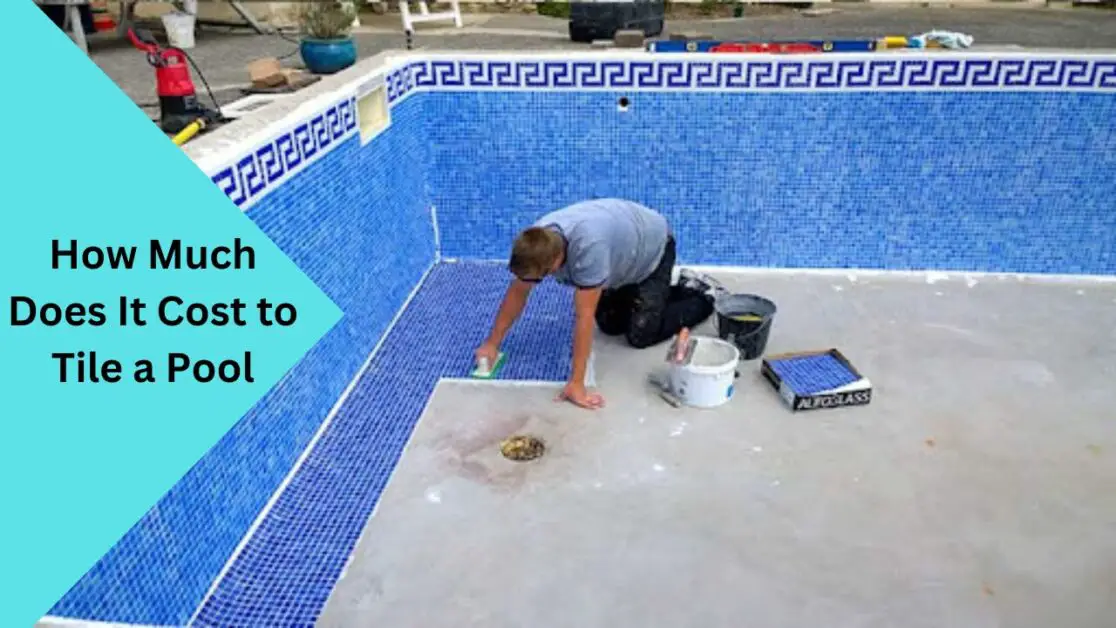When it comes to enhancing the beauty and durability of your swimming pool, tiling is an excellent investment. Not only does it add an appealing aesthetic, but it also offers practical benefits such as improved water resistance and longevity. However, before diving into the world of pool tiling, it’s crucial to understand the costs involved. In this comprehensive guide, we’ll explore the factors affecting pool tiling costs, break down the expenses, provide cost calculation methods, and shed light on the benefits of acid and chlorine washes.
Factors Affecting Pool Tiling Costs
The cost of tiling a pool can vary significantly based on several factors. These include:
- Pool Size: Larger pools require more materials and labor, increasing the overall cost.
- Tile Selection: From glass mosaics to ceramic tiles, the type and quality of tiles chosen impact the expenses.
- Surface Preparation: If the pool surface needs extensive repair or preparation before tiling, it can add to the cost.
- Complexity of Design: Elaborate patterns or intricate designs can require more time and expertise, translating into higher labor costs.
- Geographic Location: Labor and material costs can fluctuate depending on your region.
Cost Breakdown of Pool Tiling
Let’s dive into the specific costs involved in tiling a pool to get a clearer perspective.
Labor Costs
Labor costs generally make up a significant portion of the overall expenses. With each hour spent on your project, skilled professionals ensure a flawless and long-lasting tile installation. On average, you can expect labor costs to range from $50 to $100 per hour, with the total cost varying based on the scale and complexity of the project.
Material Costs
The cost of materials depends on the type and quality of tiles you choose. Here’s a rough estimate of the material costs:
- Ceramic Tiles: ranging from $5 to $15 per square foot
- Glass Mosaics: ranging from $15 to $50 per square foot
- Natural Stone: ranging from $20 to $60 per square foot
Additionally, you’ll need adhesive, grout, and other supplies, which can add approximately $2 to $5 per square foot.
Additional Costs to Consider
While labor and materials cover the core expenses, there are additional costs to be aware of:
- Surface Preparation: Repairing cracks, leveling the surface, or removing old tiles can incur additional charges, depending on their extent.
- Pool Equipment Removal: If any pool equipment or features need to be temporarily removed during the tiling process, it can result in extra costs.
- Permits and Inspections: Some regions may require permits and inspections, potentially adding to the overall expense.
To ensure an accurate cost estimate, it’s advisable to consult with reputable pool tiling professionals who can evaluate your specific requirements and provide an all-inclusive quote.
Calculating Pool Tiling Costs: A Step-by-Step Guide

While understanding the components of pool tiling costs is helpful, it’s equally important to determine a budget and calculate the expenses accurately. Consider the following methods:
Utilizing Online Tools
Several online pool tiling cost calculators allow you to input relevant details, such as pool size, tile type, and labor costs, providing a ballpark estimate. Although these tools provide a general idea, keep in mind that they may not factor in all variables specific to your project.
Consulting Professionals
For a more accurate cost estimate tailored to your unique requirements, consult professional pool tilers or contractors. They can assess your pool’s condition, recommend suitable tiles, and provide you with an itemized breakdown of costs.
Is It Worth the Investment?
While pool tiling does involve upfront costs, it adds immense value and enhances the overall aesthetics of your pool. Tiling not only showcases a wide array of design options but also provides water resistance, durability, and ease of maintenance. The enhanced appeal and longevity offered by pool tiling make it a worthwhile investment for homeowners looking to enhance their outdoor oasis.
Acid Wash or Chlorine Wash: Which is Better?
Pool maintenance plays a crucial role in keeping your investment in top shape. Acid washes and chlorine washes are two popular methods to revitalize the appearance and cleanliness of your pool. But which one is better?
Both acid washes and chlorine washes have their benefits and considerations. Acid washes are effective in removing stains, mineral deposits, and discoloration from the pool surface. However, they are more suitable for certain types of pools and require caution due to the use of strong chemicals. On the other hand, chlorine washes sanitize the pool, removing algae, bacteria, and other contaminants. They are considered safer and more versatile for various pool types. Here is our comprehensive Related Article about 5 Ways to Clean Pool Tile Without Draining Pool
Ultimately, the choice between acid wash and chlorine wash depends on your pool’s condition, the specific problem you aim to address, and your preferences. Consulting with pool professionals can help you make an informed decision based on their expertise.
Maintaining the Aesthetic Appeal: Does Acid Wash Change Pool Color?
A common concern when considering an acid wash is whether it will alter the pool’s color. It’s natural to want the aesthetic appeal to remain intact. Fortunately, an acid wash is unlikely to change the pool color significantly. Instead, it can restore the original vibrancy and luster of the tiles, making them look fresh and new.
To explore more details and considerations regarding Changing Color, our comprehensive guide on Can You Change Color of a Gunite Pool? Has you covered.
Cost of Chlorine Wash and Its Benefits
If you decide to opt for a chlorine wash, the cost is typically lower than that of an acid wash. The expenses depend on various factors such as pool size and condition. On average, a chlorine wash can cost between $300 and $500, including labor and materials.
Beyond cost, chlorine washes offer several benefits. They rid the pool of algae, bacteria, and other invisible contaminants, ensuring a safe and hygienic swimming environment. Regular chlorine washes maintain water clarity, prevent unsightly stains, and prolong the life of your pool tiles.
Conclusion
Tiling your pool not only enhances its beauty but also adds durability and practicality. By understanding the factors that affect pool tiling costs, the breakdown of expenses, and the options for maintenance, you can make informed decisions that align with your budget and aesthetic preferences. Remember to consult professionals for accurate cost estimates and expert advice.
Investing in pool tiling is an excellent way to transform your swimming pool into a stunning oasis that you can enjoy for years to come. By budgeting wisely and exploring the best maintenance options, your tiled pool will become the highlight of your outdoor space, providing you with endless relaxation and joy.

Greetings, fellow pool enthusiasts! I’m Turner Davis, your dedicated guide to the world of pool care and maintenance. With over a decade of experience in the field, I’ve made it my mission to transform ordinary pools into extraordinary aquatic retreats.

